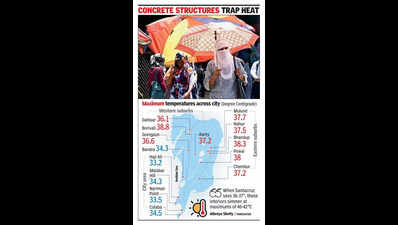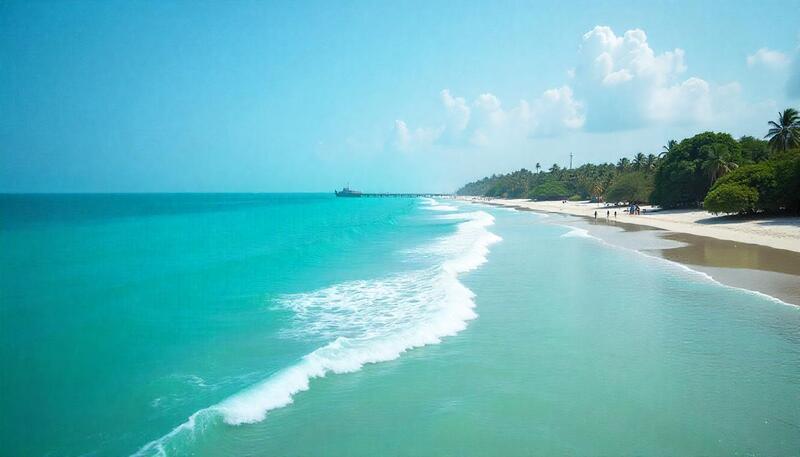Temp gap between interior areas, sea front crosses 4C | Mumbai News - The Times of India

Mumbai: Even as Mumbaikars sweated it out under hot and humid conditions on Monday, temperature recordings revealed a disparity between the city's coastal areas and landlocked suburbs, underscoring the impact of the heat island effect created by concrete clusters.
The IMD Colaba observatory recorded day temperatures of 34.2 degrees while IMD Santacruz observatory posted higher temperatures of 36.8 degrees. Following a similar trend, other island city locations like Nariman Point and Malabar Hill were around 33-34°C (see graphic) while the mercury surged well past 38°C in densely developed suburban pockets.
Borivali led the scorcher list at 38.8°C, followed by Bhandup (38.3°C), Powai (38°C), and Mulund (37.7°C).
Experts say the reason for this disparity lies in geography. The island city, bordered by the Arabian Sea, benefits from the moderating influence of sea breeze, which helps check daytime temperatures. In contrast, the suburbs—especially the eastern stretches—are landlocked, with few water bodies or large open areas nearby. As a result, places trap heat in concrete structures and see quicker and sharper spikes in temperature during the day.
"Proximity to the sea plays a big role in regulating temperature. Areas like Nariman Point and Colaba have the advantage of sea winds, while places like Bhandup or Borivali heat up faster and remain hotter for longer," said Abhijit Modak, an independent weather forecaster. "On a typical breezy April day in Mumbai, temperatures generally stay around 33°C in Colaba, rise to about 34°C in Santacruz, and go up to 36°C or more in the eastern suburbs beyond Ghatkopar," he said.
Athreya Shetty, another independent forecaster, said the city's coolest part is always the southern peninsula. A thin piece of land, sea breeze here prevents temperatures from soaring, unless an anticyclone system blocks it. "Due to varied geography such as Sanjay Gandhi National Park, Thane creek & Parsik Hills in a small radius , minute changes in wind patterns dictate temperature. Most of the heat Mumbai receives comes from easterly/north easterly winds from interiors. Landlocked eastern suburbs, Mulund-Thane, Navi Mumbai and outskirts of Kalyan-Dombivli often see maximum touching 2-4°C higher than the Santacruz observatory," he said. Citizens like Nikhil Desai from King Circle said the boom in population of vehicles has also had a devastating impact on local climate.













